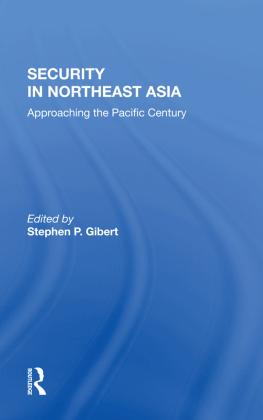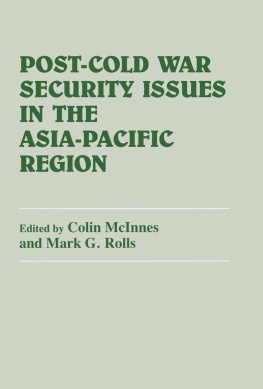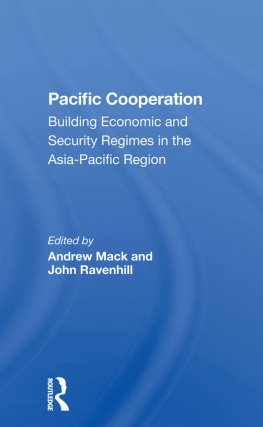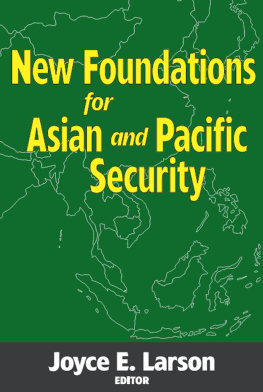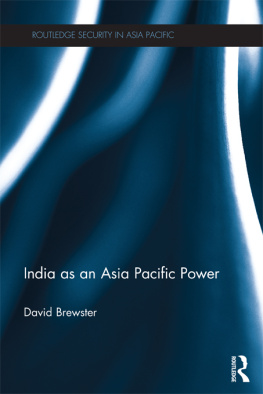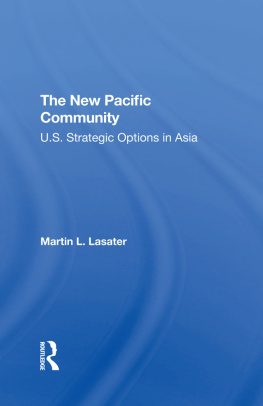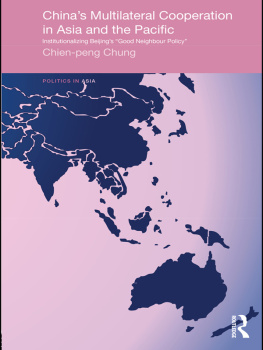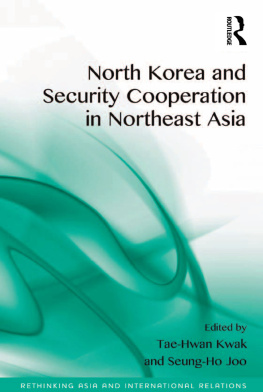SECURITY IN NORTHEAST ASIA
Studies in Global Security
Alan Ned Sabrosky, Series Editor
Also in This Series
Alliances in U.S. Foreign Policy: Issues in the Quest for Collective Defense, edited by Alan Ned Sabrosky
First published 1988 by Westview Press
Published 2019 by Routledge
52 Vanderbilt Avenue, New York, NY 10017
2 Park Square, Milton Park, Abingdon, Oxon OX14 4RN
Routledge is an imprint of the Taylor & Francis Group, an informa business
Copyright 1988 Taylor & Francis
All rights reserved. No part of this book may be reprinted or reproduced or utilised in any form or by any electronic, mechanical, or other means, now known or hereafter invented, including photocopying and recording, or in any information storage or retrieval system, without permission in writing from the publishers.
Notice:
Product or corporate names may be trademarks or registered trademarks, and are used only for identification and explanation without intent to infringe.
Library of Congress Cataloging-in-Publication Data
Security in Northeast Asia: approaching the Pacific century/edited
by Stephen P. Gibert.
p. cm.(Studies in global security)
Includes index.
1. ChinaNational security. 2. JapanNational security.
3. KoreaNational security. 4. PhilippinesNational security.
5. Soviet UnionNational security. 6. United StatesNational
security. 7. Pacific AreaNational security. I. Gibert, Stephen
P. II. Series.
UA830.S36S 1988
355.03305dc 19
88-10753
CIP
ISBN 13: 978-0-367-28696-5 (hbk)
Contents
, Stephen P. Gibert
Part I
Diplomacy and Power: The Great Powers
, Harold C. Hinton
, Thomas W. Robinson
, Michio Umegaki
Part II
Diplomacy and Power: The Lesser Powers
, Seung-Hwan Kim
, Larry A. Niksch
, Stephen P. Gibert
Part III
The Military Arena
, Sarah M. Taylor
, Martin L. Lasater
Part IV
Toward the Future
, Stephen P. Gibert
Guide
The phenomenal economic growth of most of the countries along the Pacific rim of Asia has led many to speculate that influence in world affairs is shifting away from Europe and that a Pacific Century lies ahead. One might dismiss this as hyperbole if the regions importance in the international arena derived solely from its economic prowess. But this is not the case; Northeast Asia and the Western Pacific also impact significantly on world as well as regional security and the countries in the area are increasingly critical to international political stability.
Northeast Asia is the only region where four of the five centers of world power meet and intersect. The fifth, Western Europe, is not present in the region but since the principal threat to European securitythe Soviet Unionmust always consider its Asian front when formulating policy toward Western Europe, the NATO countries indirectly benefit from Northeast Asian dynamism. Thus, the Northeast Asian-Western Pacific region will play an increasingly important role in international affairs, affecting the security and prosperity of the United States to a degree not imagined a generation ago.
The National Security Studies Program of Georgetown Universitys Graduate School each year conducts a series of Weekend Seminars for the some two hundred early mid-career defense professionals who constitute its student body. The topic for the series in 1986 was Northeast Asia in United States Security Policy. Out of this series eight papers were selected for this volume. Each contribution has been updated and revised, with the object of presenting to the reader a comprehensive and integrated discussion of the region and its relationships to United States and world security concerns.
I would like to thank the chapter authors, each of whom is a well-known expert in the field, for their valuable contributions to this book. I also greatly appreciate the editorial assistance of Roger Smith and especially Scott Spoerry, both Ph.D. candidates at Georgetown University. Scott, who was a National Public Information Fellow at Georgetown, also coordinated the mechanical details of preparing the manuscript in the proper format for publication. Finally, I owe a debt of gratitude to Alan Sabrosky, Director of Strategic Studies at the Army War College, and also Editor of the Westview Press series, Studies in Global Security, for his encouragement and helpful criticism. Of course the editor and the contributors assume sole responsibility for the views expressed in this book.
Stephen P. Gibert, Director,
National Security Studies and
Professor of Government
Georgetown University
CHAPTER 1
The Northeast Asian Arena
Stephen P. Gibert
A decade ago it was considered a bit eccentric to remark that political and economic influence and power in world affairs was shifting away from Europe and that a Pacific Century lay ahead. Now hardly a day goes by when some public figure does not proclaim the beginning of an Asian-Pacific era and speculates what this portends for Americas future security and economic well-being.
In this particular case, the claims of importance for the Pacific Basin nations are not exaggerated; no duo of countries are equal in importance to the American futureand indeed that of the entire worldthan China and Japan. Chinas immense population (three times that of the Soviet Union, four times that of the United States, sixteen times that of Germany and eighteen times that of France) guarantees that it will be among the handful of states which will shape the destiny of the next century. Furthermore, China is currently engaged in a very ambitious modernization effort which, if successful, will lift it from the ranks of the Third World nations to that of an industrial power. With a four-thousand-mile border with the USSR, China also serves to compel the Soviet government not only to maintain large military forces in its Far Eastern military district but always to consider its Asian frontier when formulating policy toward NATO in the West.
Since the exchange of diplomatic relations in 1979 between Washington and Beijing, security cooperation between China, Japan, and the United States has added to Moscows concerns and, at the same time, improved Chinas international bargaining power. China has emerged as a key participant in the Iron Triangle with the Soviet Union and the United States. Presently, however, China is seeking good relations with the Soviet Union and the United States in order to concentrate on internal economic development. Emphasizing its desire for peace, the PRC has given the lowest priority in its Tour Modernizations to military defense. Although China claims to be pursuing a policy of equidistance between the Soviet Union and the United States, in fact Beijing is clearly tilting toward Washington. In addition, Americas trade and cultural relations with China are growing and becoming important to both countries, thus adding to stability in the region.
Japan, like China, will be one of the several most important nations of the twenty-first century. Indeed, although Japans economy is still much smaller than the American economy, in many ways Japan may already be the leading economic power in the world. It is difficult to compare the gross national product of various nations with any degree of confidenceespecially between capitalist countries and the statist economy of the USSR. But, to the extent that it can be measured, it is generally thought that Japan may have surpassed the Soviet Union in total productivity. With about half the GNP of the United States, Japan enjoys about equal GNP per capita with America and perhaps about twice that of the Soviet Union.

